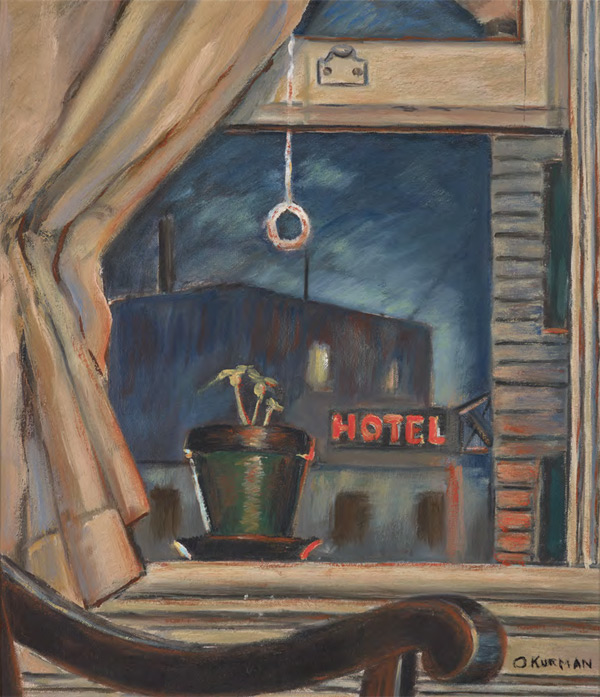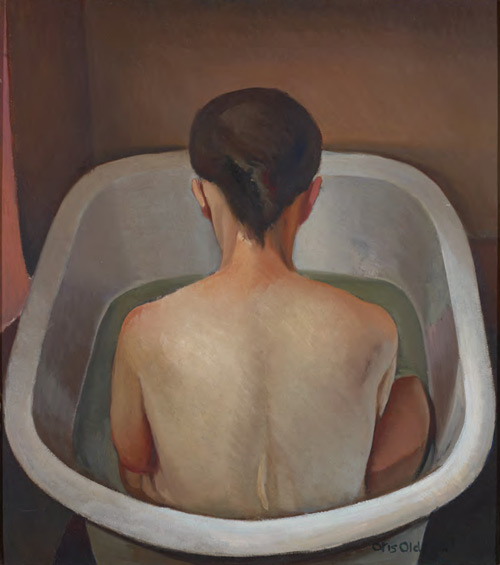Friday, March 28, 2014
First Chapters
I've started reading A History of Architecture: Settings and Rituals by Spiro Kostof. The introduction talks about ways to approach the study of buildings. Kostof advocates for a holistic understanding of architecture, one that attempts to encompass everything from function to adornment to the oft-referenced "ravages of time". (Oft-referenced in general, not by Kostof.) I appreciate his attitude. The idea that buildings and the manners in which we occupy them can elucidate aspects of human nature far beyond the walls themselves is what prompted me to create this blog. While Kostof tackles a survey of structures from the time before writing until the time of his writing, I am engaging in a haphazard indulgence of curiosity. That's okay. My vague hope is that Dwelling Process will become something meaningful, at least meaningful to me, if I keep trying.
Labels:
interior
Thursday, March 27, 2014
Rough Growth

Odd creations from Jo Boyer Ceramics: very much like sea creatures crossed with wood burls. They are called "wall pods". Obviously I want one, to keep as a strange and silent pet.


Labels:
objects
Wednesday, March 26, 2014
Parents & Teenagers Unaware Of Adolescent Sleep Deficits
Most teenagers don't get enough sleep. They also don't know that they're under-rested. Neither do their parents, probably due to lack of education on the issue. It is surprisingly difficult to get an accurate picture of a healthy adolescent nighttime routine.
The impact of insufficient sleep is drastically harmful. Teenagers are already emotionally volatile; sleep deprivation and mood disorders are solidly linked. A 2013 study indicated that sleep is vital when it comes to properly utilizing language, which is necessary for scholastic endeavors as well as everyday communication.

Another study, which focused on some 300+ South Australian teenagers, showed that both kids and parents vastly underestimate the incidence and severity of sleep problems among adolescents. It's no secret that high schoolers have bad bedtime habits. However, researchers found that a shockingly high proportion of students fulfilled clinical criteria for sleep problems: 66%. Yikes.
The researchers commented that, "if many parents are unaware that their adolescent has a sleep problem, there is a risk [that] these adolescents will not gain access to treatment." Later they continued, "Parents [may be] unaware of what constitutes 'good' sleep in adolescents [and they are] unlikely to modify family, homework, or sleep schedules if they do not believe that there is a problem with their teens' sleep."
Part of the issue is clearly simple ignorance, compounded by the difficulty of accessing concrete information about adolescent sleep problems. Even those who are actively seeking resources may have to dig around and read closely to find actionable knowledge. For instance, I just Googled "clinical sleeping problems criteria adolescents", and the most helpful results were incomprehensible pages from US National Library of Medicine, BehaveNet, and Harvard Health Care Policy. Those articles may be useful to psychiatrists, but not to laypeople.
Resources for adults with sleeping issues are relatively abundant: here is a quick checklist from IU Health and a more in-depth one from Sleep Disorders Guide. Parents can use such lists to evaluate their own nighttime schedules. But it's hard to extrapolate the principles to youthful family members, because sleep needs are determined based on physio-cognitive development.
A 2012 study illustrated that sleep deprivation can significantly degrade adolescent memory. Teenagers' bodies and minds are literally expanding, meaning that their rest requirements exceed those of adults. Okay, that's common knowledge. But where's the checklist of specifics for puberty-age kids? Has this demographic been abandoned due to its notorious variability? Despite the efforts of Stanford’s Center for Sleep Sciences and Medicine, the parents of adolescents are left in the dark--without even a nightlight.
The medical community needs to emphasize the importance of sleep to parents and teachers; high school health curricula should stress the need for sleep. As a teenager, I remember being told to go to bed early before exams instead of staying up late to study, but nobody told me why, and I had no rubric for judging whether my personal sleep habits were appropriate. Today, many high schoolers are in the same boat.
Maybe it's time for a nap.
The impact of insufficient sleep is drastically harmful. Teenagers are already emotionally volatile; sleep deprivation and mood disorders are solidly linked. A 2013 study indicated that sleep is vital when it comes to properly utilizing language, which is necessary for scholastic endeavors as well as everyday communication.

// Muhammad Rehan //
Another study, which focused on some 300+ South Australian teenagers, showed that both kids and parents vastly underestimate the incidence and severity of sleep problems among adolescents. It's no secret that high schoolers have bad bedtime habits. However, researchers found that a shockingly high proportion of students fulfilled clinical criteria for sleep problems: 66%. Yikes.
The researchers commented that, "if many parents are unaware that their adolescent has a sleep problem, there is a risk [that] these adolescents will not gain access to treatment." Later they continued, "Parents [may be] unaware of what constitutes 'good' sleep in adolescents [and they are] unlikely to modify family, homework, or sleep schedules if they do not believe that there is a problem with their teens' sleep."
Part of the issue is clearly simple ignorance, compounded by the difficulty of accessing concrete information about adolescent sleep problems. Even those who are actively seeking resources may have to dig around and read closely to find actionable knowledge. For instance, I just Googled "clinical sleeping problems criteria adolescents", and the most helpful results were incomprehensible pages from US National Library of Medicine, BehaveNet, and Harvard Health Care Policy. Those articles may be useful to psychiatrists, but not to laypeople.
Resources for adults with sleeping issues are relatively abundant: here is a quick checklist from IU Health and a more in-depth one from Sleep Disorders Guide. Parents can use such lists to evaluate their own nighttime schedules. But it's hard to extrapolate the principles to youthful family members, because sleep needs are determined based on physio-cognitive development.
A 2012 study illustrated that sleep deprivation can significantly degrade adolescent memory. Teenagers' bodies and minds are literally expanding, meaning that their rest requirements exceed those of adults. Okay, that's common knowledge. But where's the checklist of specifics for puberty-age kids? Has this demographic been abandoned due to its notorious variability? Despite the efforts of Stanford’s Center for Sleep Sciences and Medicine, the parents of adolescents are left in the dark--without even a nightlight.
The medical community needs to emphasize the importance of sleep to parents and teachers; high school health curricula should stress the need for sleep. As a teenager, I remember being told to go to bed early before exams instead of staying up late to study, but nobody told me why, and I had no rubric for judging whether my personal sleep habits were appropriate. Today, many high schoolers are in the same boat.
Maybe it's time for a nap.
Labels:
interior
Tuesday, March 25, 2014
Pads Have Sharp Spines

I saw this pile of free cactus pads while walking my dog. I was tempted to collect some--for cooking, I guess--but the spines intimidated me.



The above is available as an $18 illustration print.
Monday, March 24, 2014
Overcast Sunshine

I saw this house in San Francisco's Dogpatch neighborhood on Saturday. The paint looks very blue in my snapshot, but in reality it was much more grey. I enjoyed the unusual contrast provided by lemony butter yellow. Color palettes that are odd but still pleasantly soothing give me a deep sense of aesthetic satisfaction. However, I would be hard-pressed to explain what makes me react that way to some juxtapositions at the exclusion of others. Regardless, I am not alone in loving this one:

// $25 pillow //

// $29 print //
Saturday, March 22, 2014
Homely Color

This illustration, titled a weekend walk, was drawn by Ana Frois. Some other works by the same artist:




Friday, March 21, 2014
Tea Wishlist: Six Tastes
A warm, fragrant mug of tea is a big part of a happy morning for me. It is a sensory delight and a comforting ritual. But I don't need to drink the same blend consistently, and in fact I don't want to. After all, isn't variety the spice of life? Literally speaking. Currently my cup is full of peach black, and yesterday it was "Super Irish Breakfast". Despite our overflowing tea bin, there are more flavors I want to try:


I am always in search of a good spicy chai, and I would like to test this fair-trade Frontier version. Throat Coat hasn't had a chance to work its magic on me since a singing class in middle school, so I'm eager give it another go.


I've enjoyed rose gelato, but never tried rose tea. (Rose hips are a different story: I brew some of those every season). "Citrus Breakfast" also sounds yummy.


I'm a sucker for a sampler, especially when the company has such a cute name! (Speaking of names, I was tempted to put "French Verveine" on the list purely because the phrase is so beautiful.) I'm also curious about the flavor of roasted dandelion root.
This post was written while half-listening to a KQED Forum segment that addressed anti-government protests in Venezuela. It is always odd to hear the eminently mellifluous Michael Krasny discuss controversy and violence. Perhaps he makes a habit of sipping Throat Coat.


I am always in search of a good spicy chai, and I would like to test this fair-trade Frontier version. Throat Coat hasn't had a chance to work its magic on me since a singing class in middle school, so I'm eager give it another go.


I've enjoyed rose gelato, but never tried rose tea. (Rose hips are a different story: I brew some of those every season). "Citrus Breakfast" also sounds yummy.


I'm a sucker for a sampler, especially when the company has such a cute name! (Speaking of names, I was tempted to put "French Verveine" on the list purely because the phrase is so beautiful.) I'm also curious about the flavor of roasted dandelion root.
This post was written while half-listening to a KQED Forum segment that addressed anti-government protests in Venezuela. It is always odd to hear the eminently mellifluous Michael Krasny discuss controversy and violence. Perhaps he makes a habit of sipping Throat Coat.
Labels:
objects
Thursday, March 20, 2014
Privacy In Paint

Good Times - Hard Times at the Thomas Reynolds Gallery is an exhibit of early San Franciscan works from the collection of Jan and Maurice Holloway. The pieces that particularly struck me were the ones with a quietly voyeuristic quality. For example, two portraits of unclothed women who face away from the viewer. There is something irresistible and addictive (at least to me) about the feeling of peering into a vulnerable space, whether occupied by a body or a careless arrangement of household objects.



Wednesday, March 19, 2014
Leaves & Light

I love the potted plants in my boyfriend's apartment. They cast particularly beautiful shadows when I was there this weekend. My fellow is not the gardening sort; one of his housemates must tend them.


Labels:
interior
Monday, March 17, 2014
Moving In

"Art can serve as a mechanism to articulate a younger nation's experience and perception of the world; it can provide an occasion for dialogue and the creation of shared meaning." Quote from "Africa's breakthrough: Art, place branding and Angola's win at the Venice Biennale, 2013" by Nicholas Cull.
It strikes me that the same is true of art in a person's home. When new inhabitants pick what will hang on their walls and populate their shelves, those choices express their self-perceived identities (either consciously or not). In turn, a home's decor will shape the particular narratives of its resident(s), as constructed both by themselves and by their friends/visitors. The interpersonal significance of art selected for a living space mirrors the international significance of art curated for a patriotically-oriented gallery. Same goes for intrapersonal and intranational story-making.
I don't mean to trivialize the quote by taking it out of the context of postcolonialism, but rather to point out the macro/micro significance of aesthetic discussions.
I hate it when I can't express what I mean without using incredibly pretentious academic language.
Friday, March 14, 2014
Fountain Of Knowledge


These snippets of architectural design from the UC Berkeley campus reminded me so strongly of Howard Roark, the protagonist from Ayn Rand's The Fountainhead. I'm not a fan of Ayn Rand in general, but that story is very compelling.


Photos via Dreams Are What Le Cinema Is For; they're screenshots from the movie, which I've never seen. Now that I think of it, I didn't actually finish the book either. Still, the aesthetics made an impression.
Labels:
exterior
Thursday, March 13, 2014
Meeting Danish Modern


$255 chair in the "Danish Modern" style. According to Danish Chairs by Noritsugu Oda, this school of design is hyperbolously wonderful:

Oda's rhapsodizing reads as overstatement, but the rest of the section offers an interesting survey of the Danish Modern movement's genesis. Next on my reading list: "The narrative nature of place branding" by Rebecca Hjortegaard Hansen.
Sorry for not working a Hamlet joke into this post.
Wednesday, March 12, 2014
The Week Starts Purple

I spotted this makeshift planter/vase near the UC Berkeley campus. It was probably rigged by a flower-loving student. I appreciate the industrial-but-domestic feel.


I also enjoyed the bouquet and pitcher in my therapist's bathroom:


Tuesday, March 11, 2014
Recent Snippets

I love this vintage double-horse pillow that sits on the couch in our living room. It's hard and lumpy, but so picturesque! The connection is tenuous, but it reminds me of medieval unicorn tapestries:

Poor wounded creature. How 'bout a happier tidbit? The other day this ginger cat came to hang out on our patio:


Mrow! My dad and I finished the last of these cookies:

The green dish was handmade by my aunt.
Homefeel History

This used to be my father's bedside table. My mom decided it would be better as an end table, and moved it next to our couch. She did not consult my father beforehand. (!!!)


Dad was pretty indignant about it. Eventually he said in a mournful tone, "I need time to get used to changes in my environment." Here's the replacement that my mother installed:


The mysterious machine with the tubes is a CPAP mask for his sleep apnea.
My father's comment got me thinking. Homefeel definitely requires a certain sameness, an endurance of expected arrangements and experiences. It's not that a home can't be dynamic, but it has to have continuing principles, especially sensory ones. The smell of cookies baking is a classic one. Nostalgia doesn't develop without loss--the childhood bedroom emptied out, or turned into a craft studio--and the homefeel that must precede nostalgia can't develop without visceral percolation. I wouldn't love my routines if I didn't feel the history of them stretching behind me, didn't worry that my imprint was fading. (Mixed metaphors, alas.)
Labels:
interior
